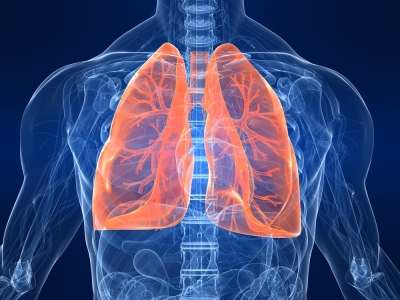New gene therapy to target airway and lungs via nasal spray
By IANS | Updated: May 23, 2025 11:53 IST2025-05-23T11:48:21+5:302025-05-23T11:53:02+5:30
New Delhi, May 23 US researchers have engineered a novel gene therapy to target the airway and lungs ...

New gene therapy to target airway and lungs via nasal spray
New Delhi, May 23 US researchers have engineered a novel gene therapy to target the airway and lungs via a nasal spray.
For gene therapy to work well, therapeutic molecules need to be efficiently delivered to the correct locations in the body. It is commonly done by using adeno-associated viruses (AAV) gene therapy.
To improve the AAV's ability to deliver therapeutics specifically to the lungs and airway, researchers at the Mass General Brigham engineered a new version, called AAV.CPP.16, which can be administered with a nasal spray.
In preclinical models, AAV.CPP.16 outperformed previous versions by more effectively targeting the airway and lungs and showing promise for respiratory and lung gene therapy, said the researchers in the paper published in the journal Cell Reports Medicine.
"We noticed that AAV.CPP.16, which we initially engineered to enter the central nervous system, also efficiently targeted lung cells," said senior author FengFeng Bei, from the Department of Neurosurgery at Brigham and Women's Hospital.
"This prompted us to further investigate AAV.CPP.16 for intranasal gene delivery to the respiratory airways," Bei added.
In the study, AAV.CPP.16 outperformed previous versions (AAV6 and AAV9) in cell culture, mouse models, and non-human primate models.
“Our findings highlight AAV.CPP.16 as a promising vector for respiratory and lung gene therapy,” the team said.
They then used the more efficient tool to deliver scar-preventing gene therapy for pulmonary fibrosis, using a mouse model of the respiratory disease.
They also used the tool to deliver gene therapy for a viral infection, where the therapy prevented the replication of the SARS-CoV-2 virus in a mouse model of Covid-19.
"Although further research is needed, our findings suggest that intranasal AAV.CPP.16 has strong translational potential as a promising delivery tool for targeting the airway and lung," said Bei.
Disclaimer: This post has been auto-published from an agency feed without any modifications to the text and has not been reviewed by an editor
Open in app